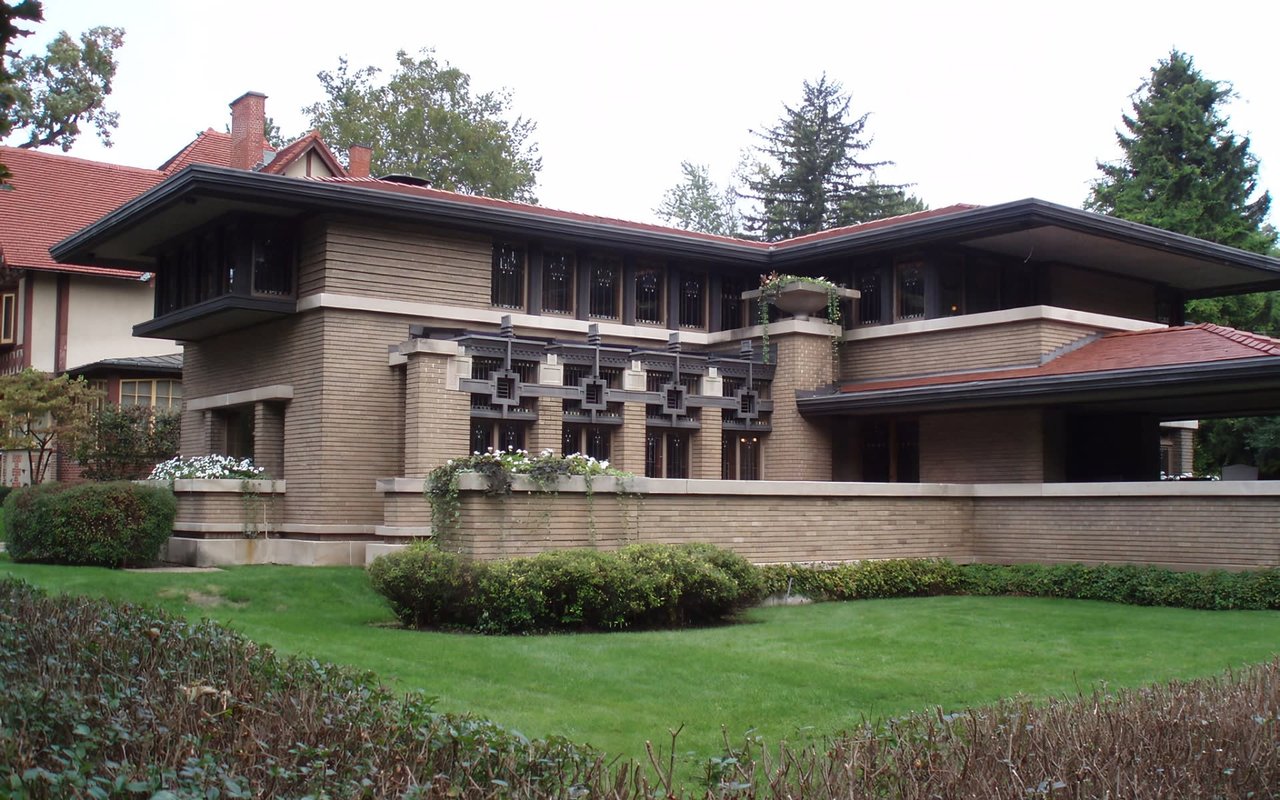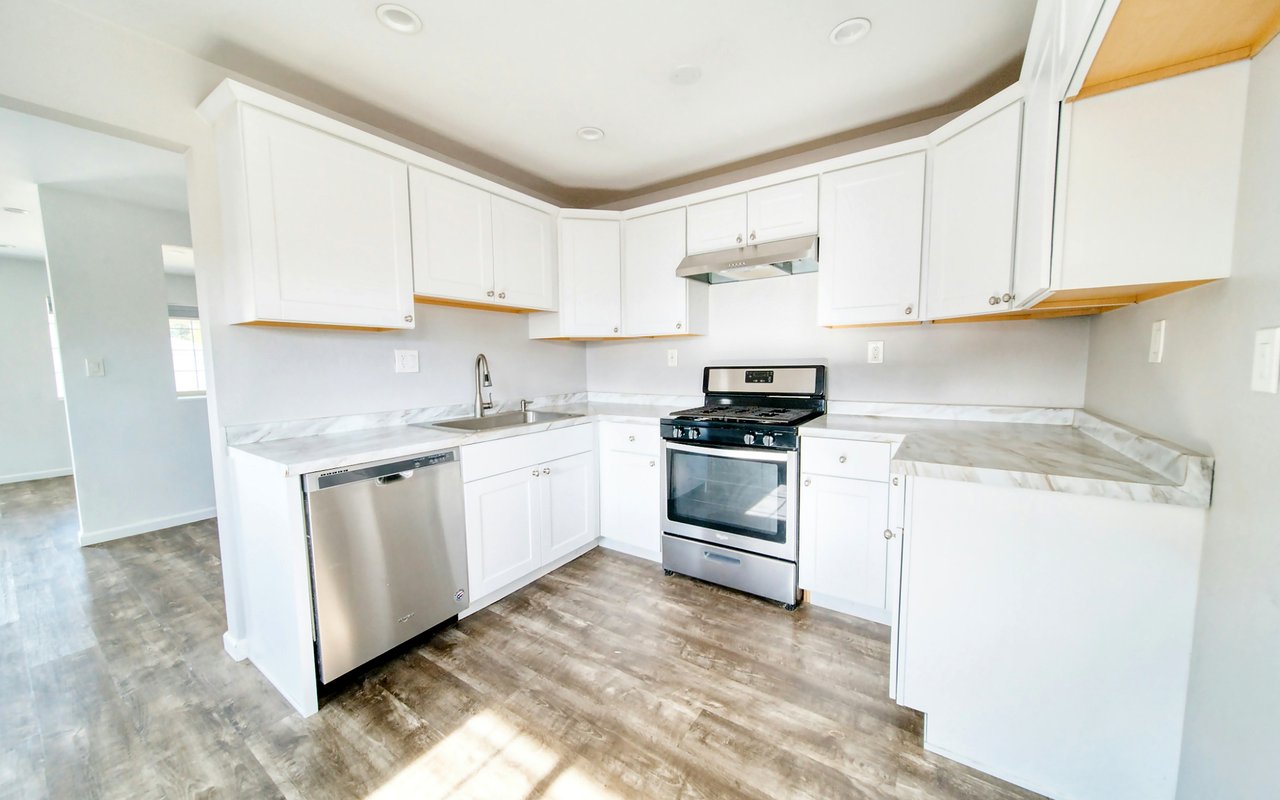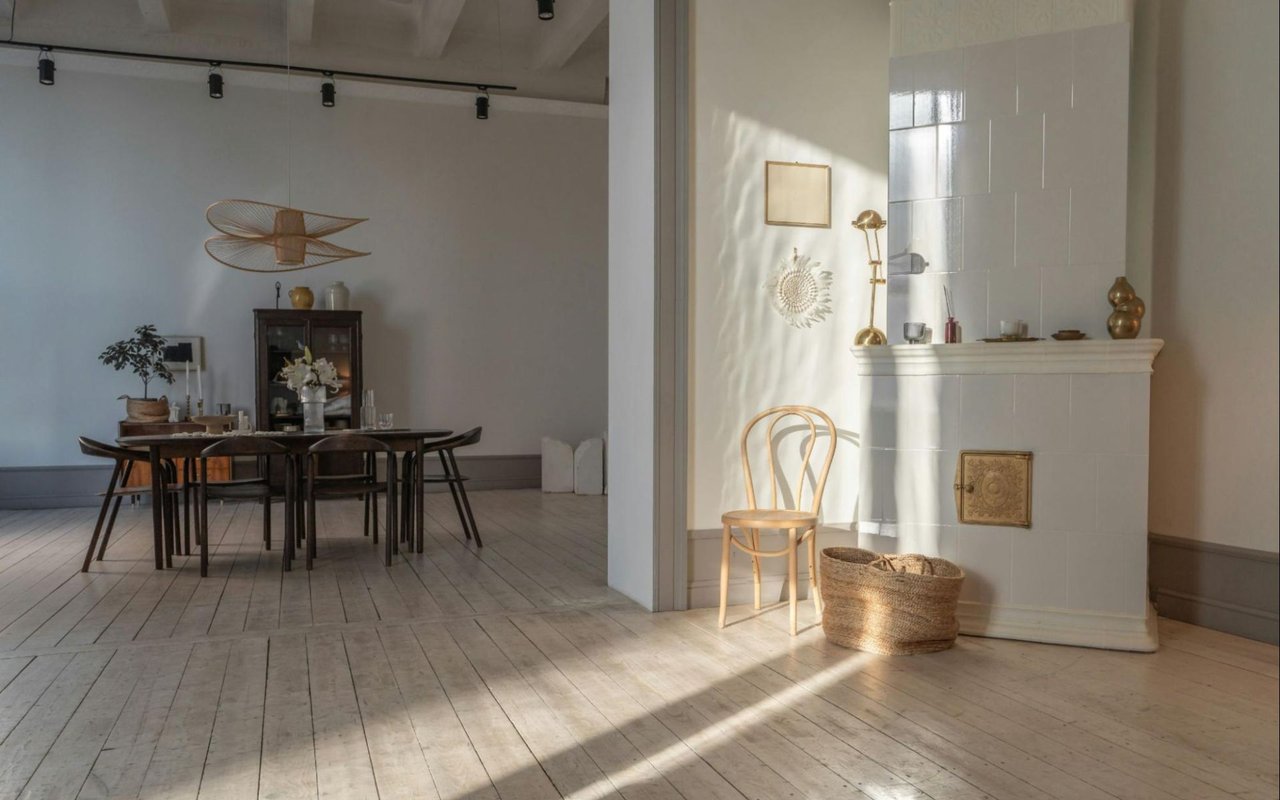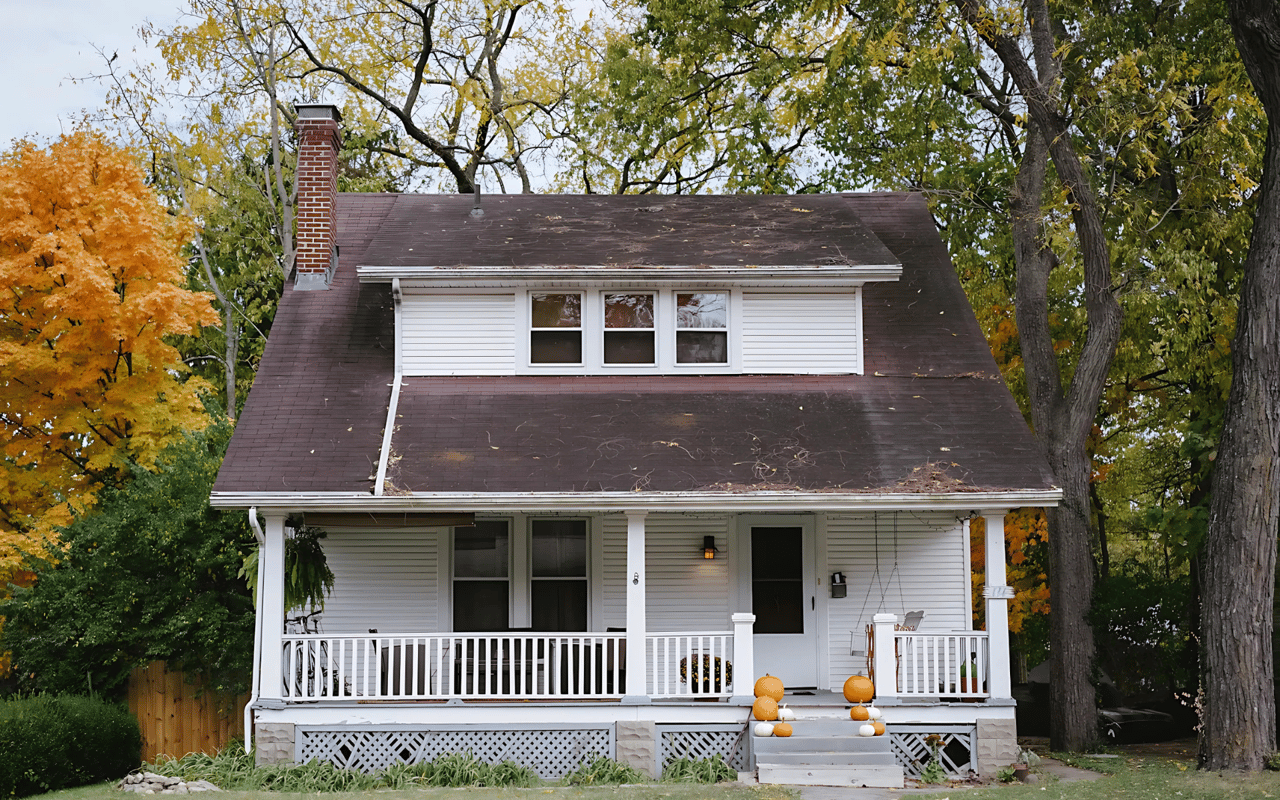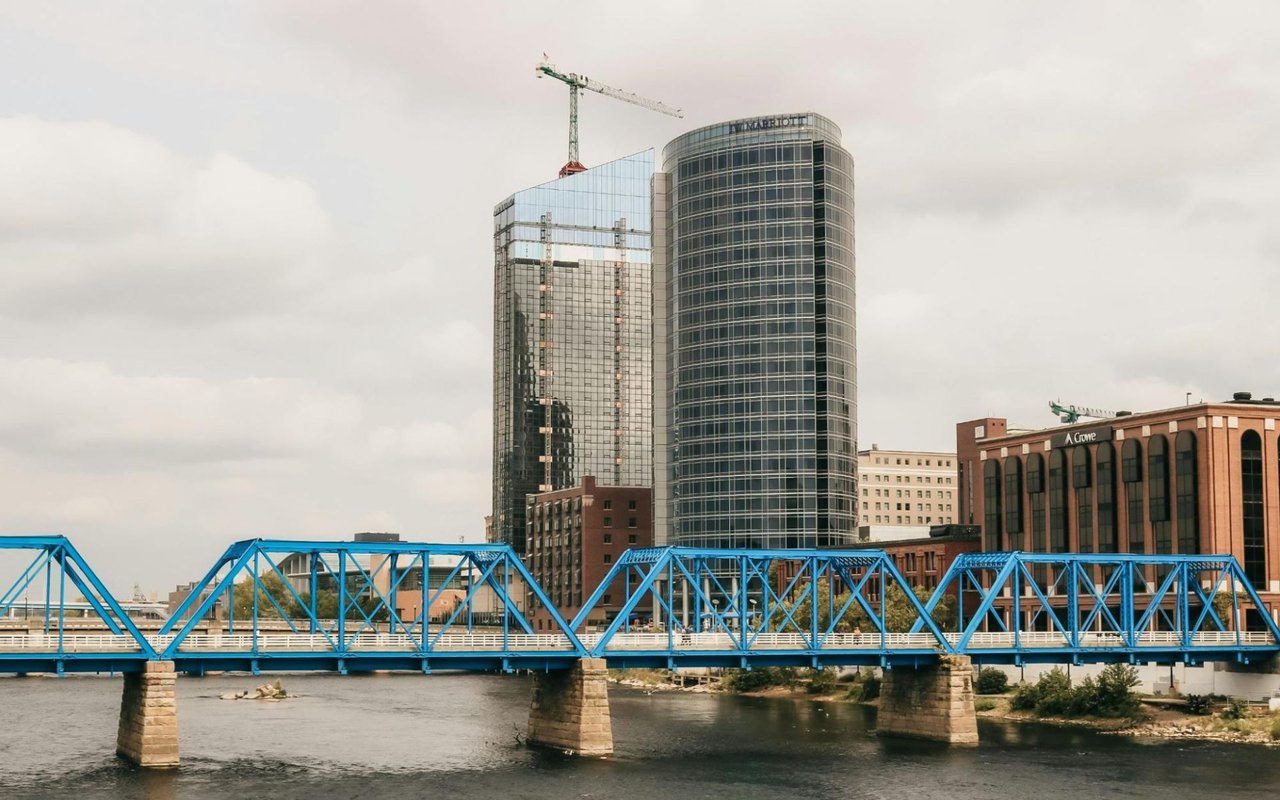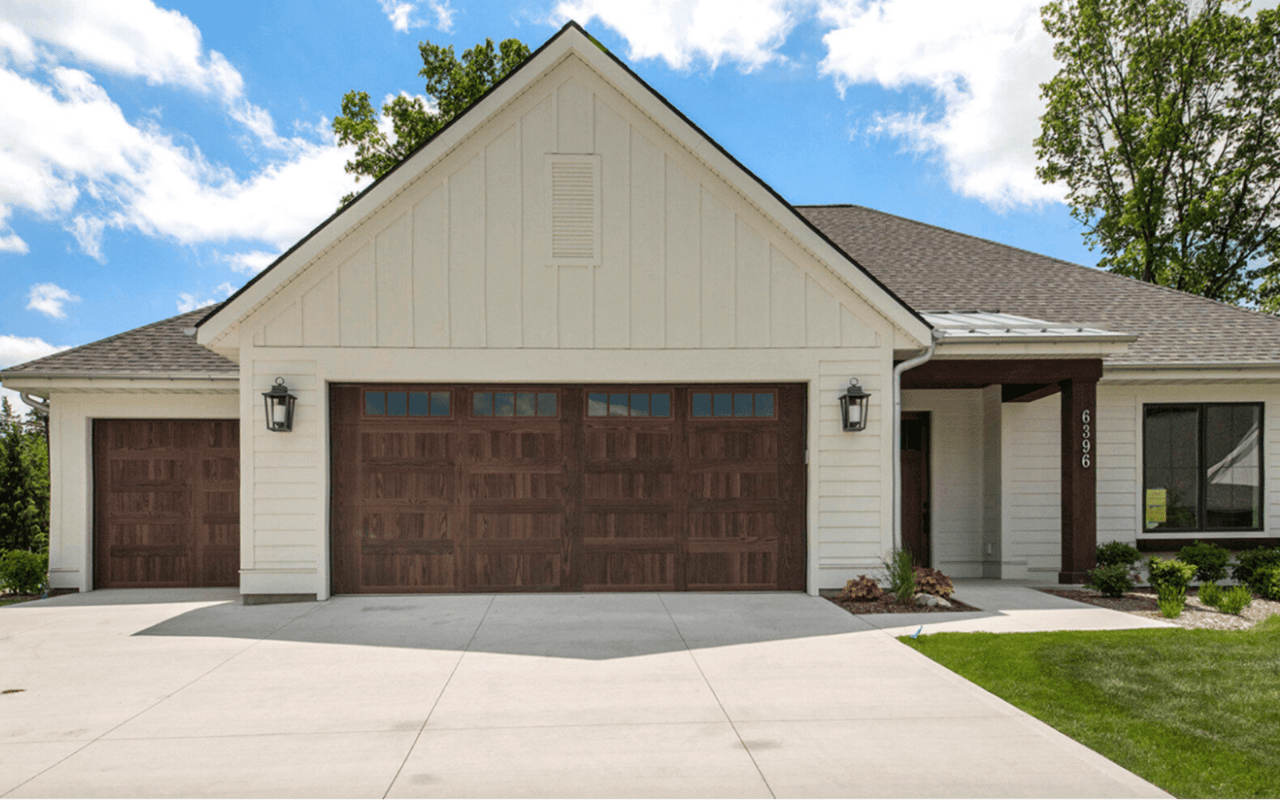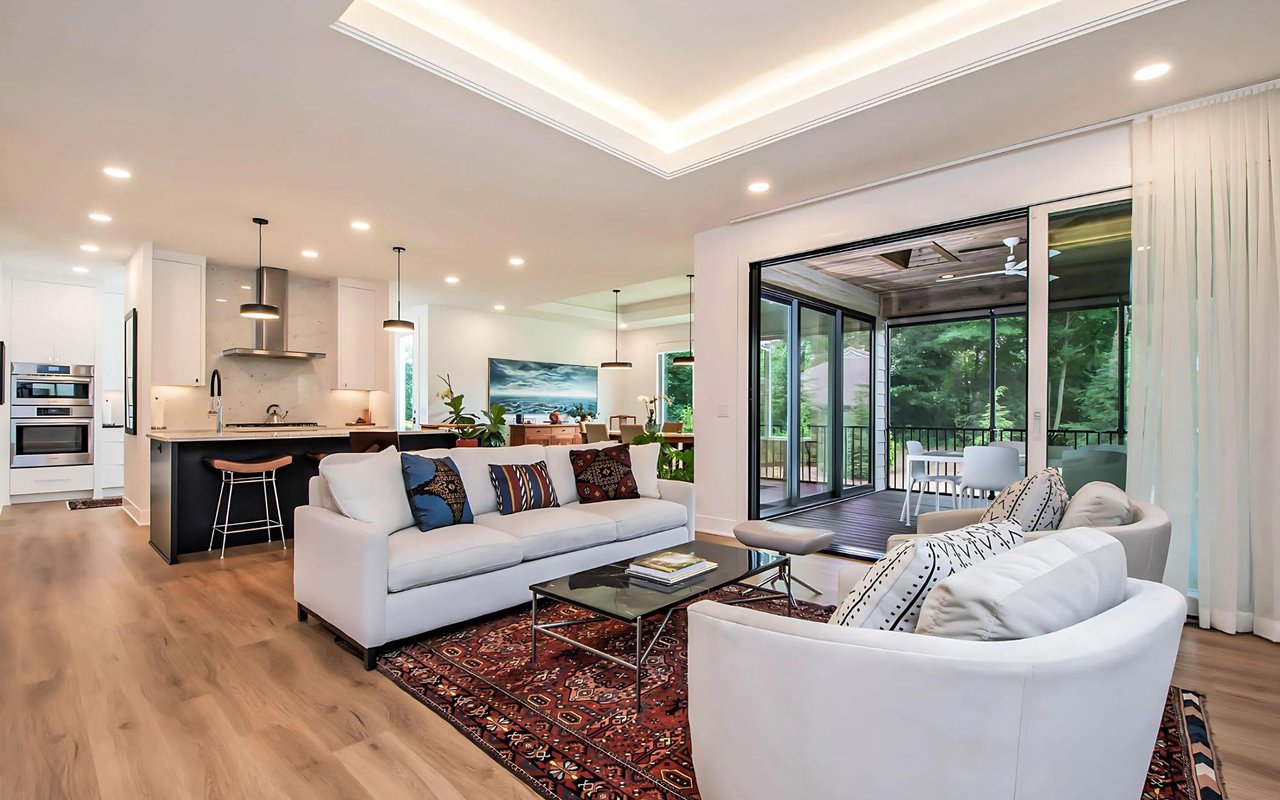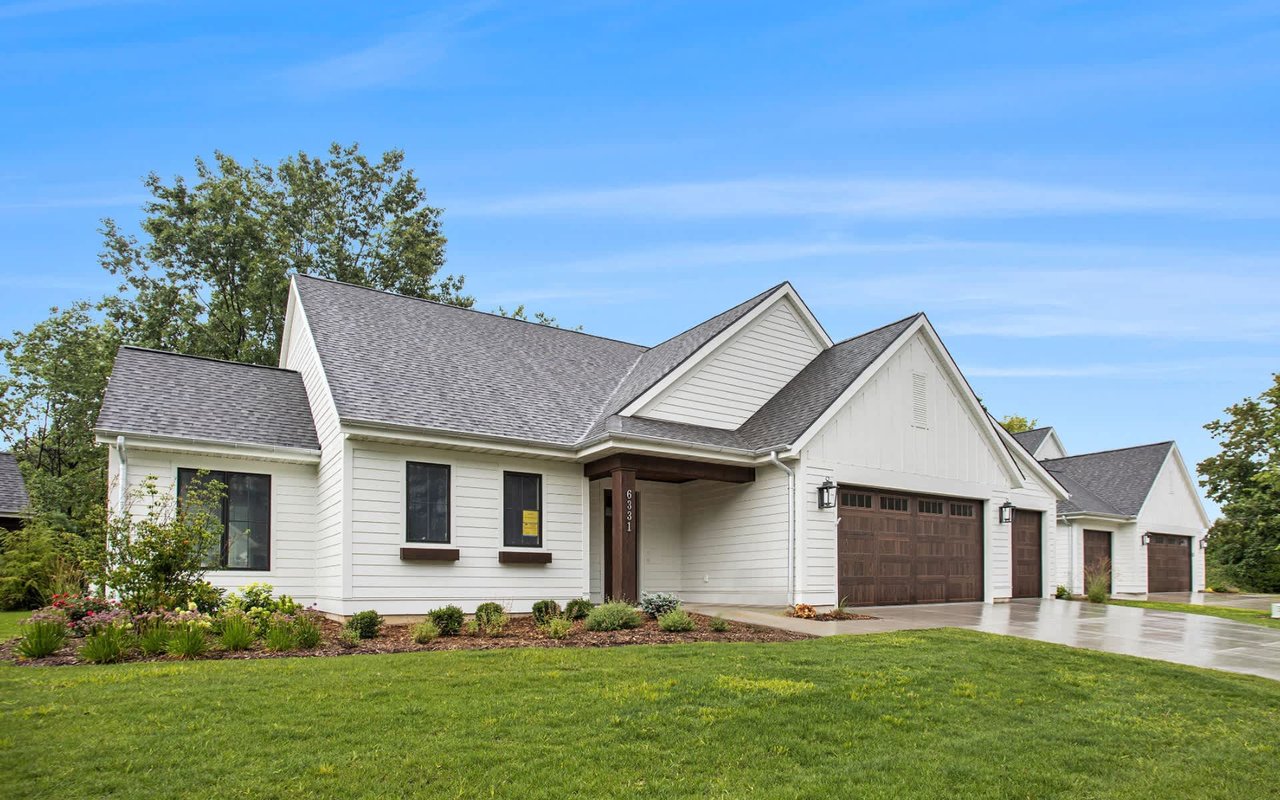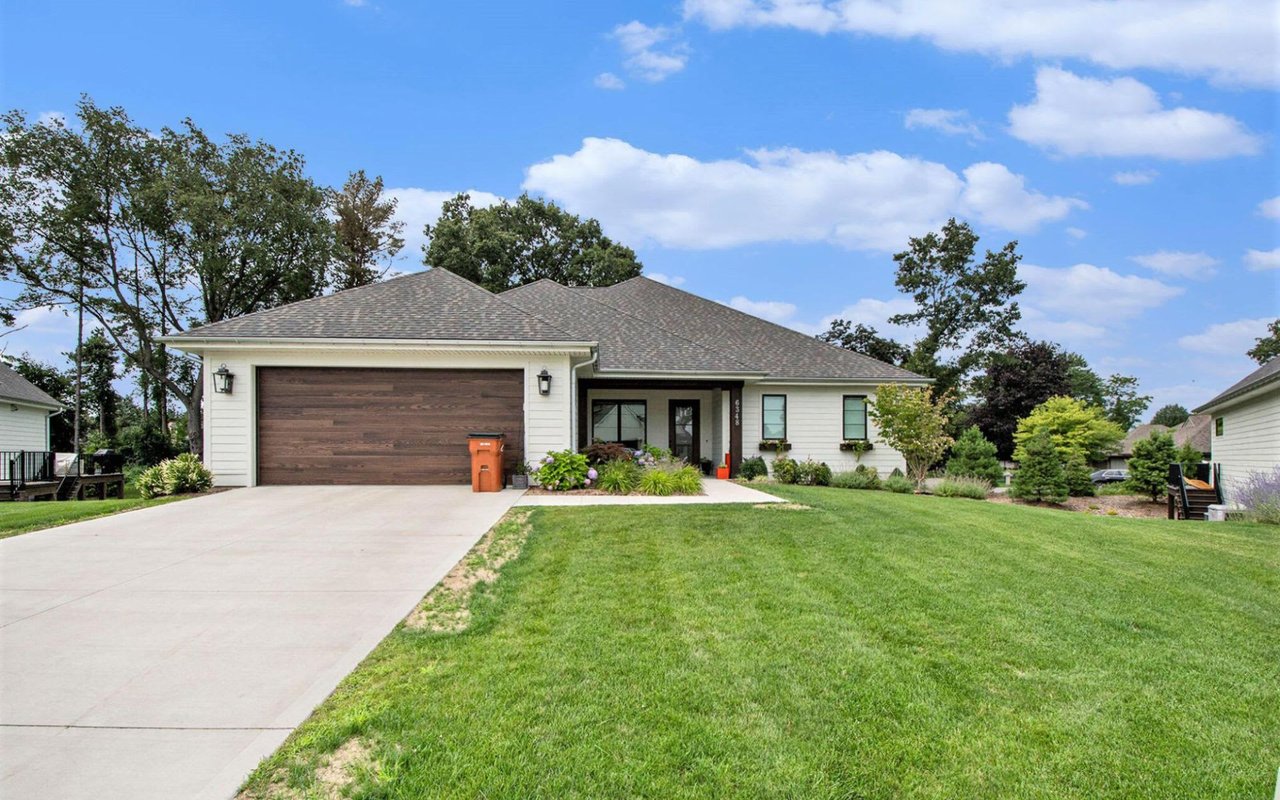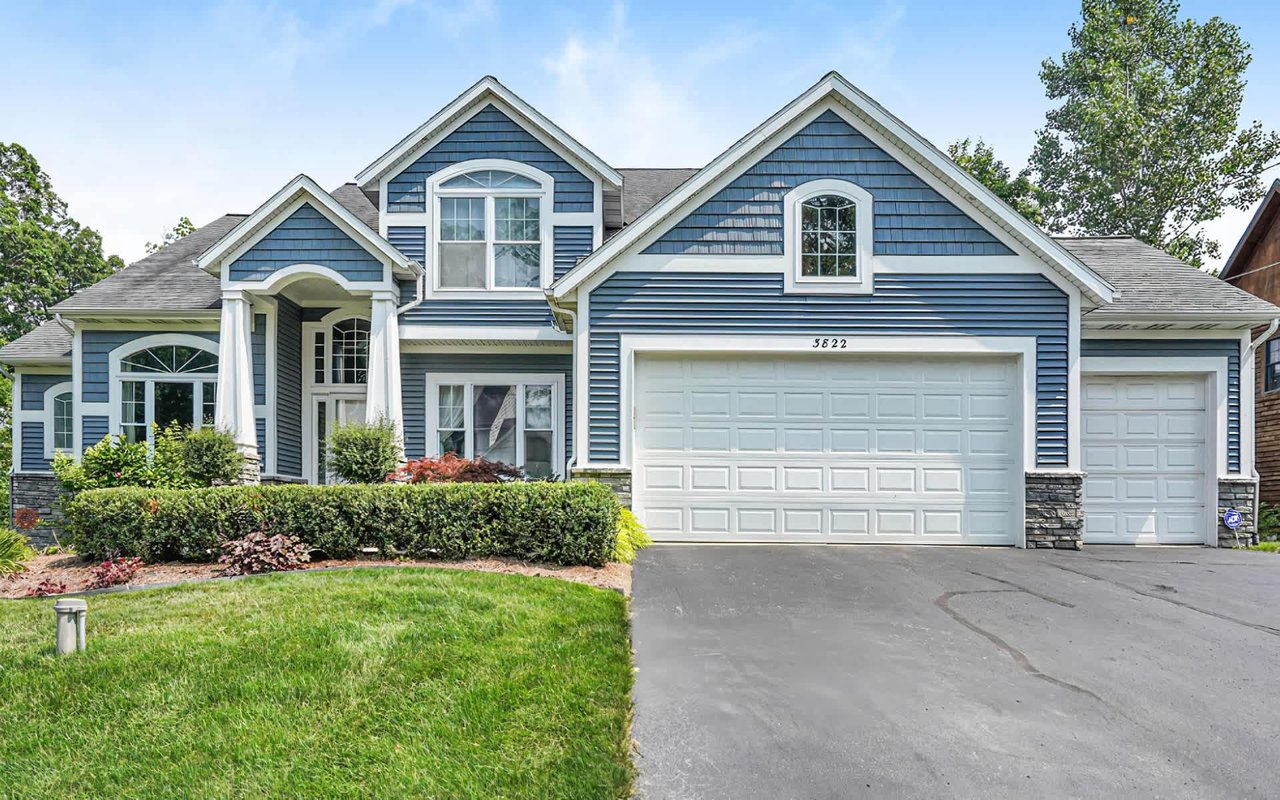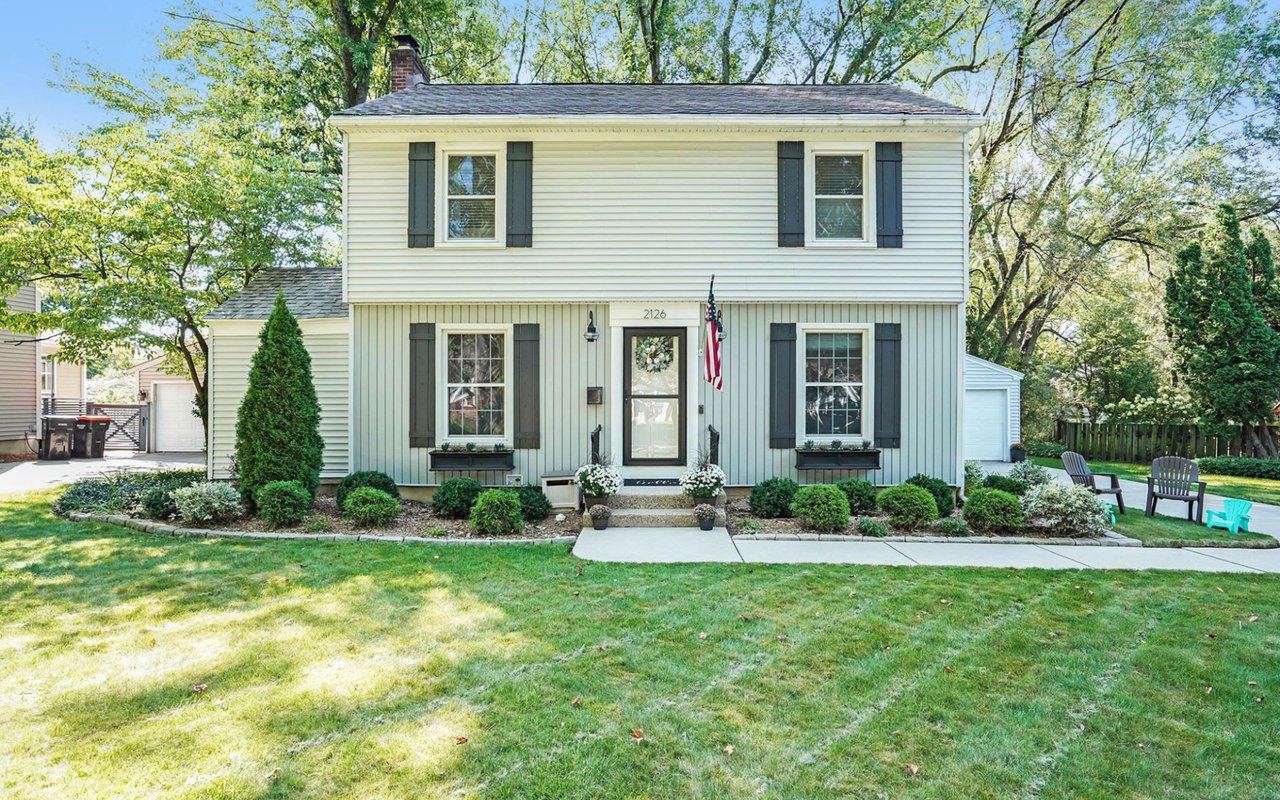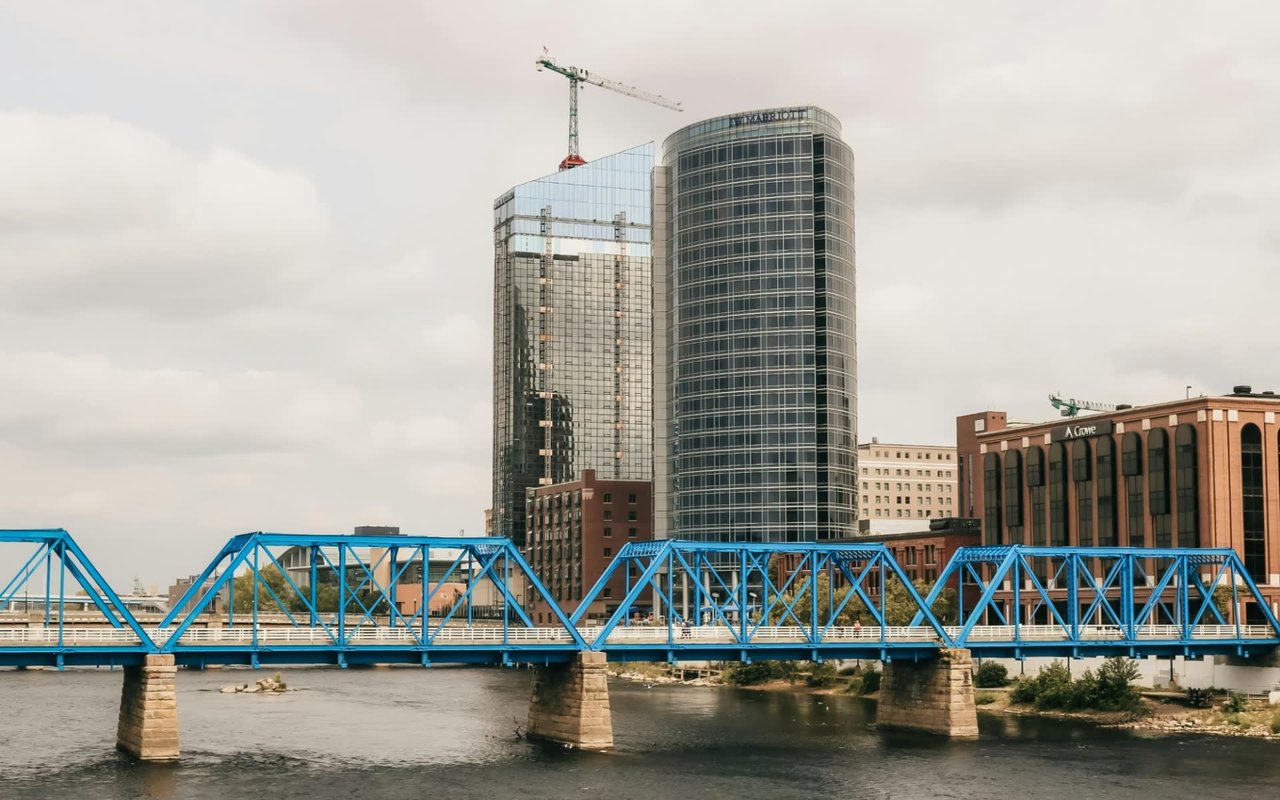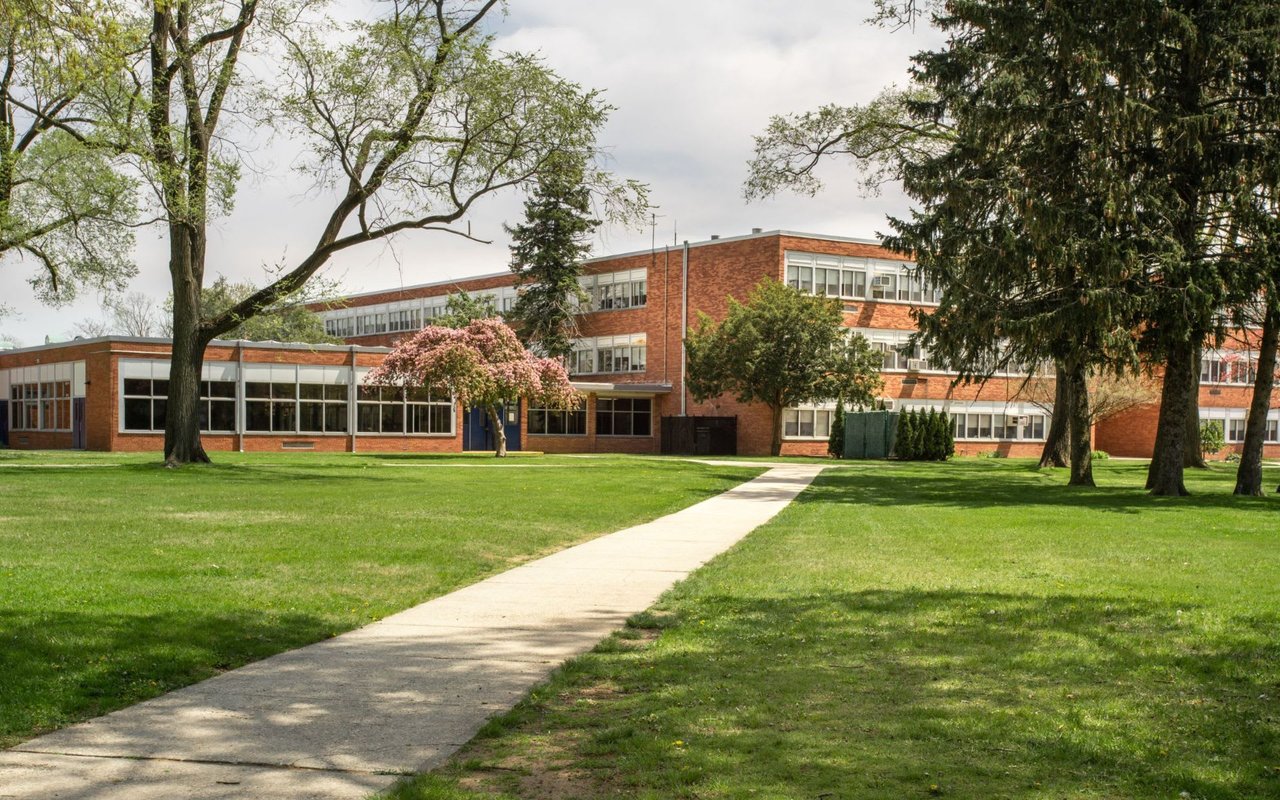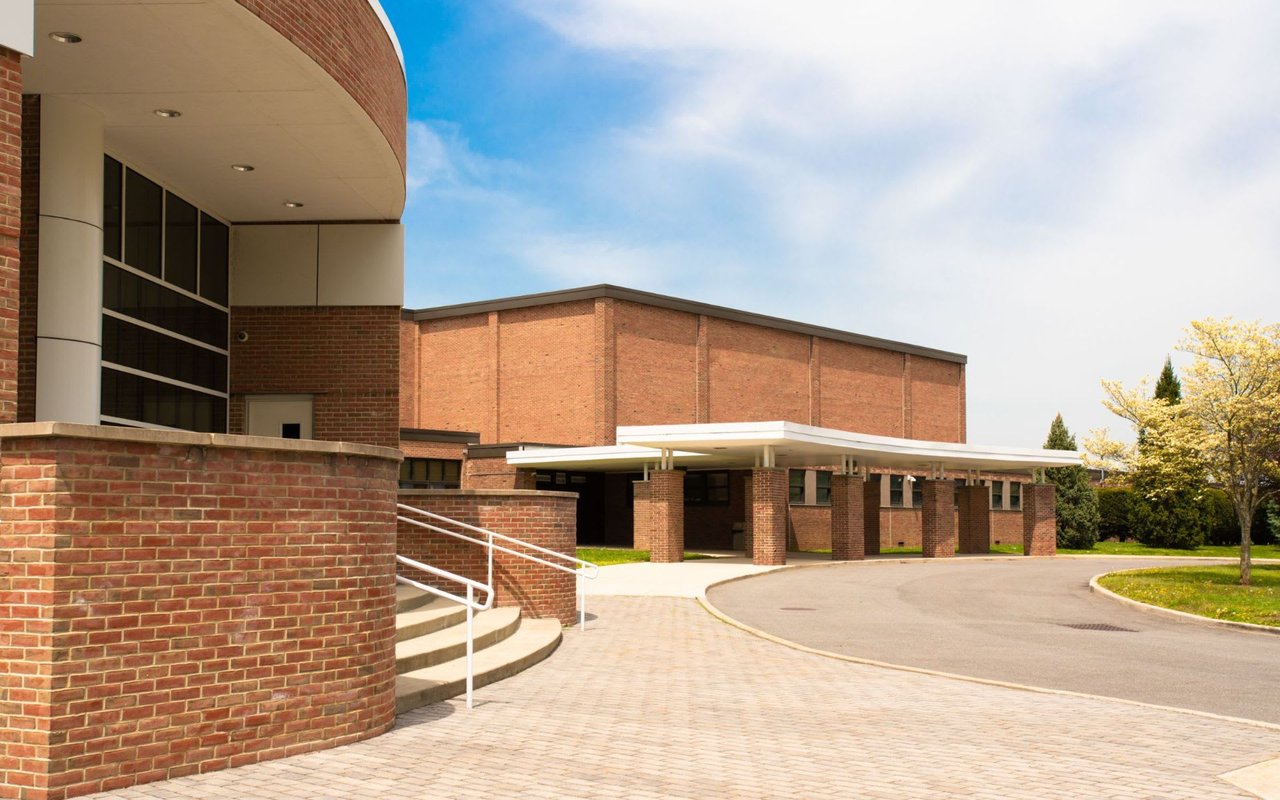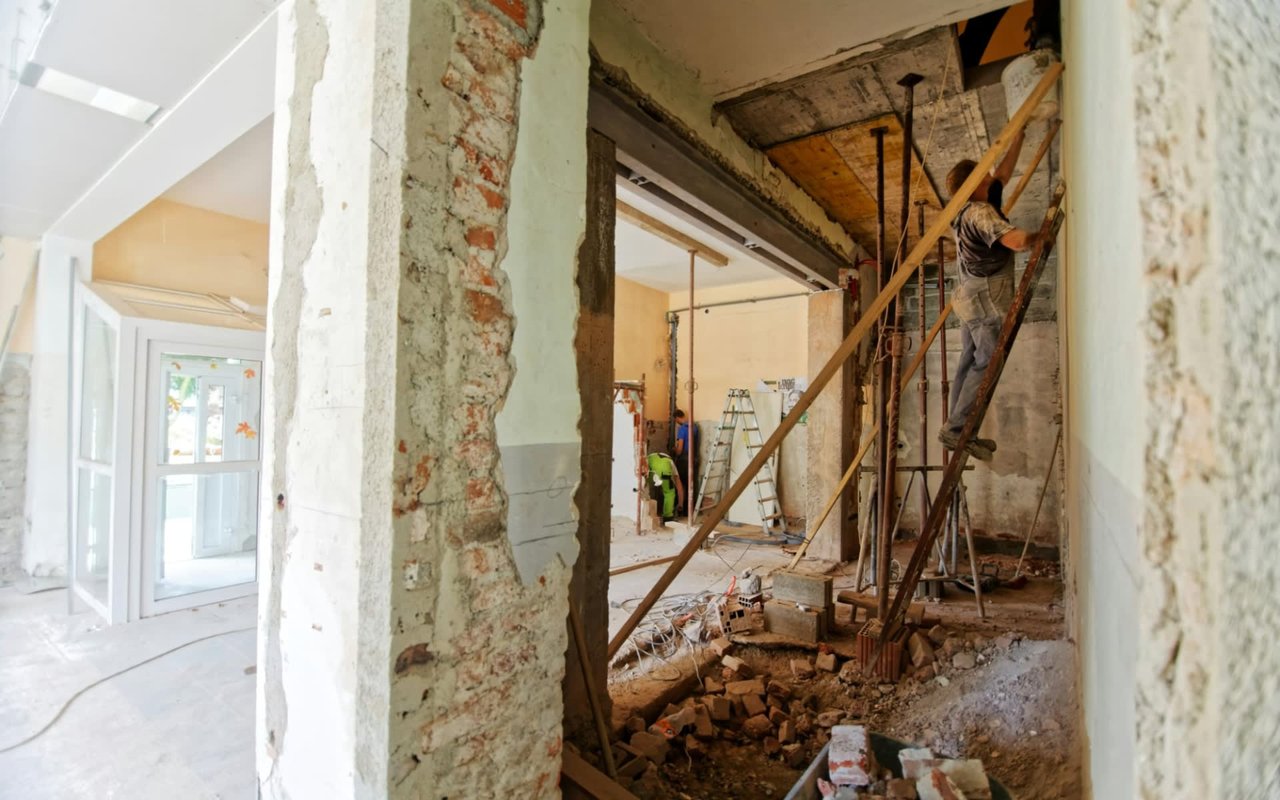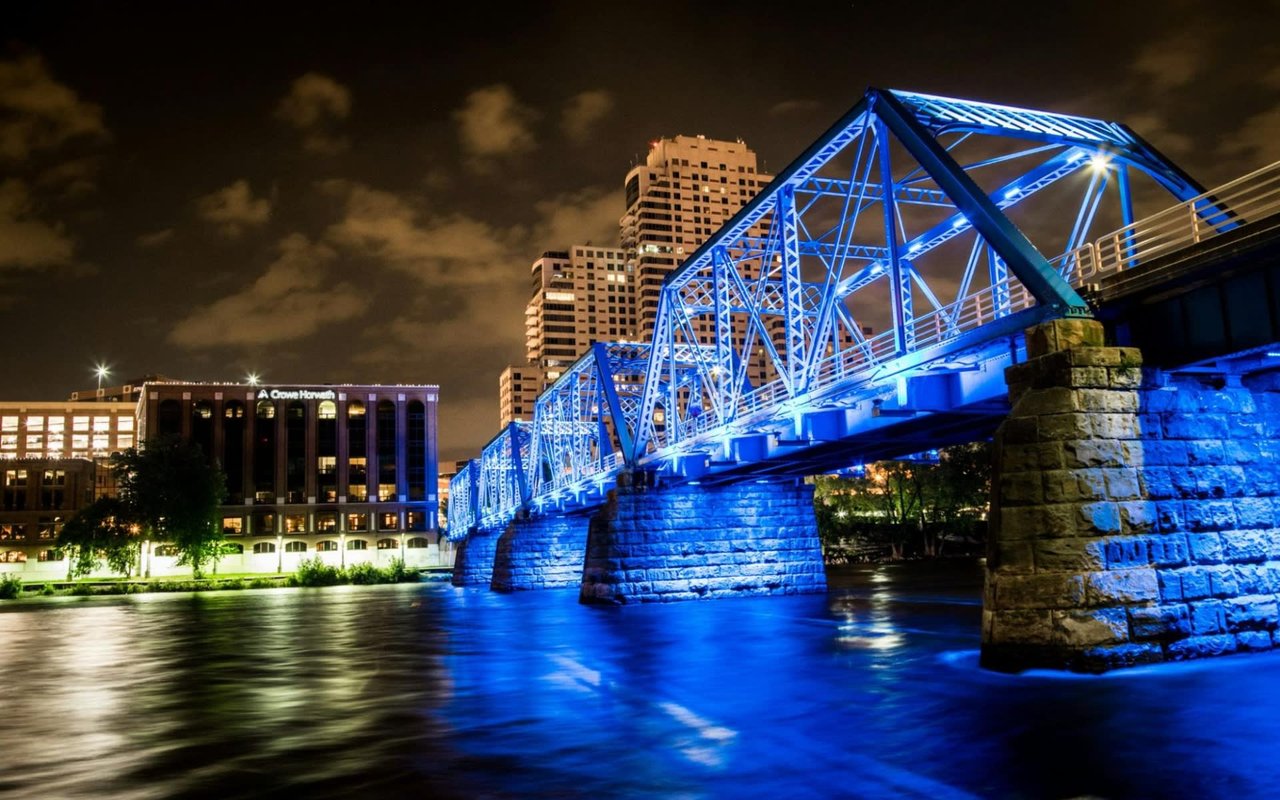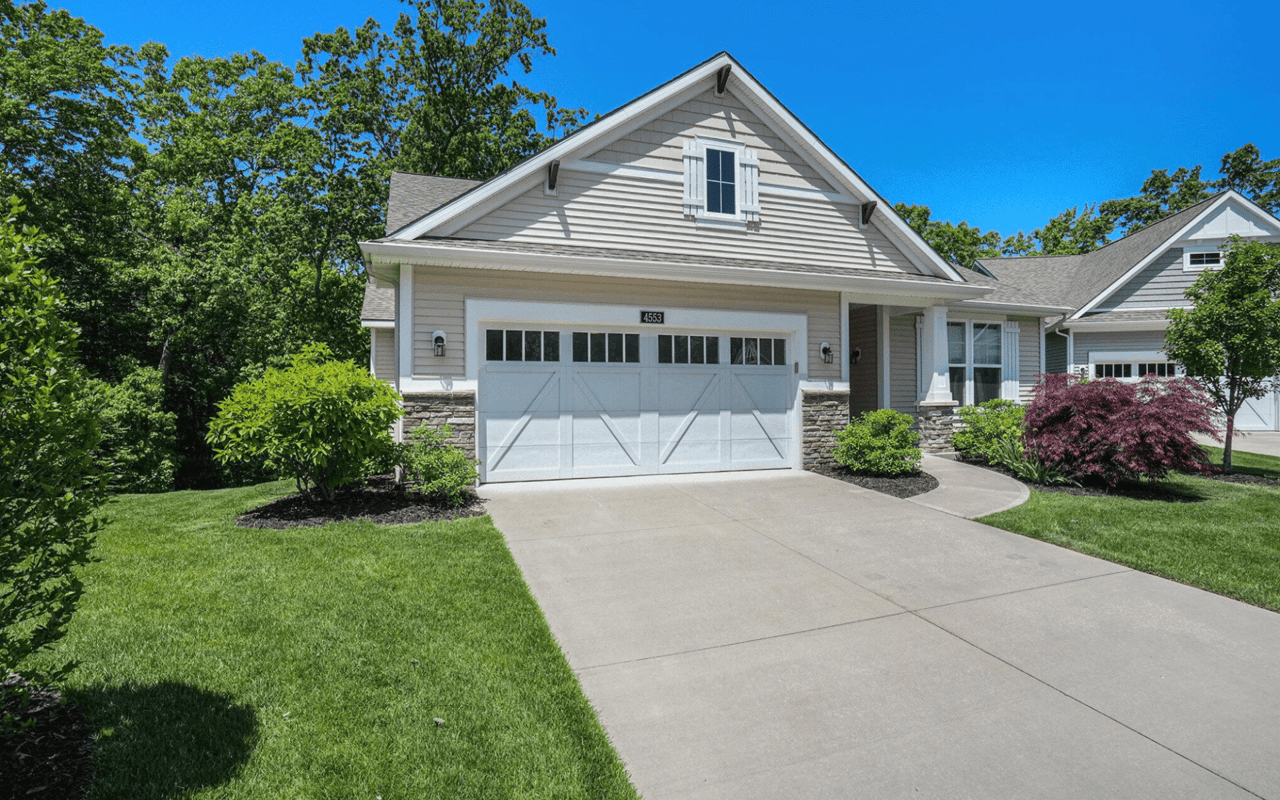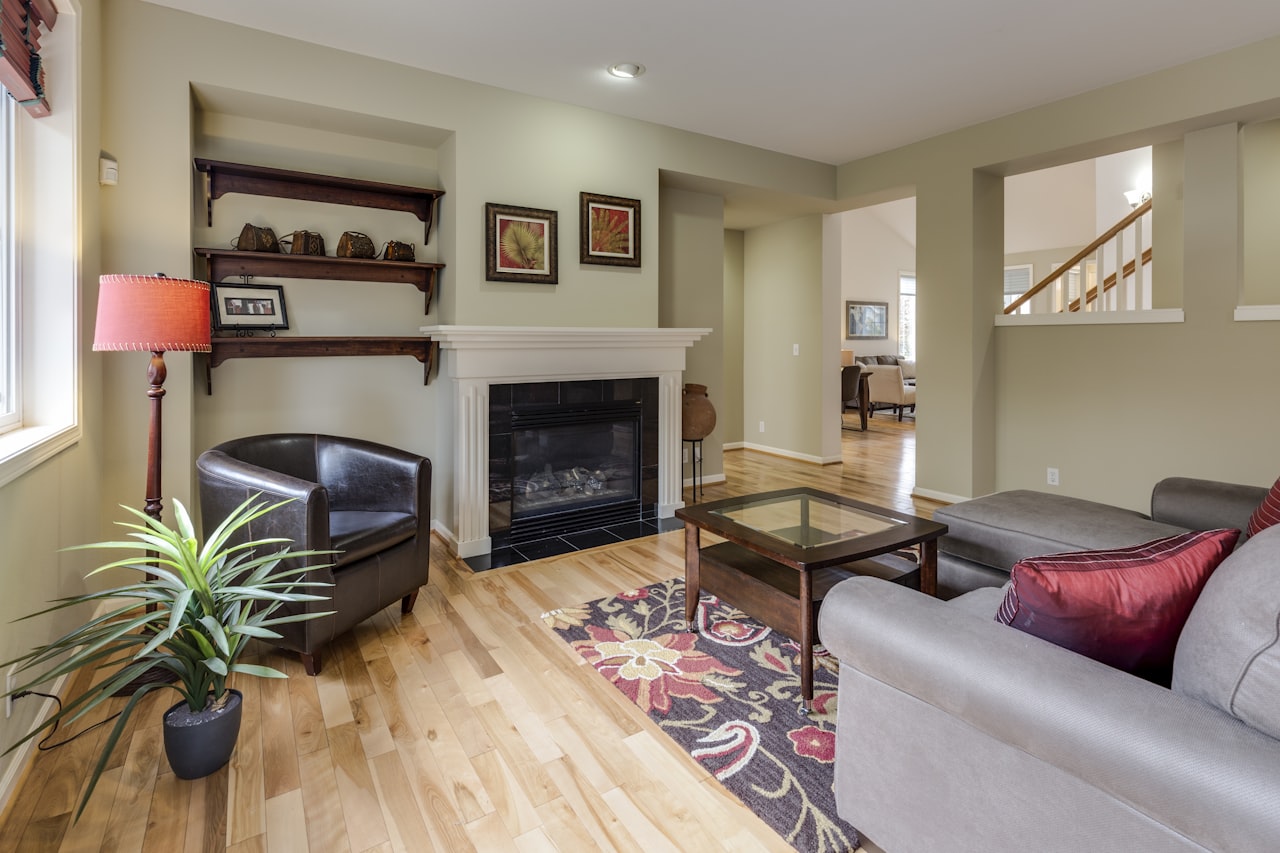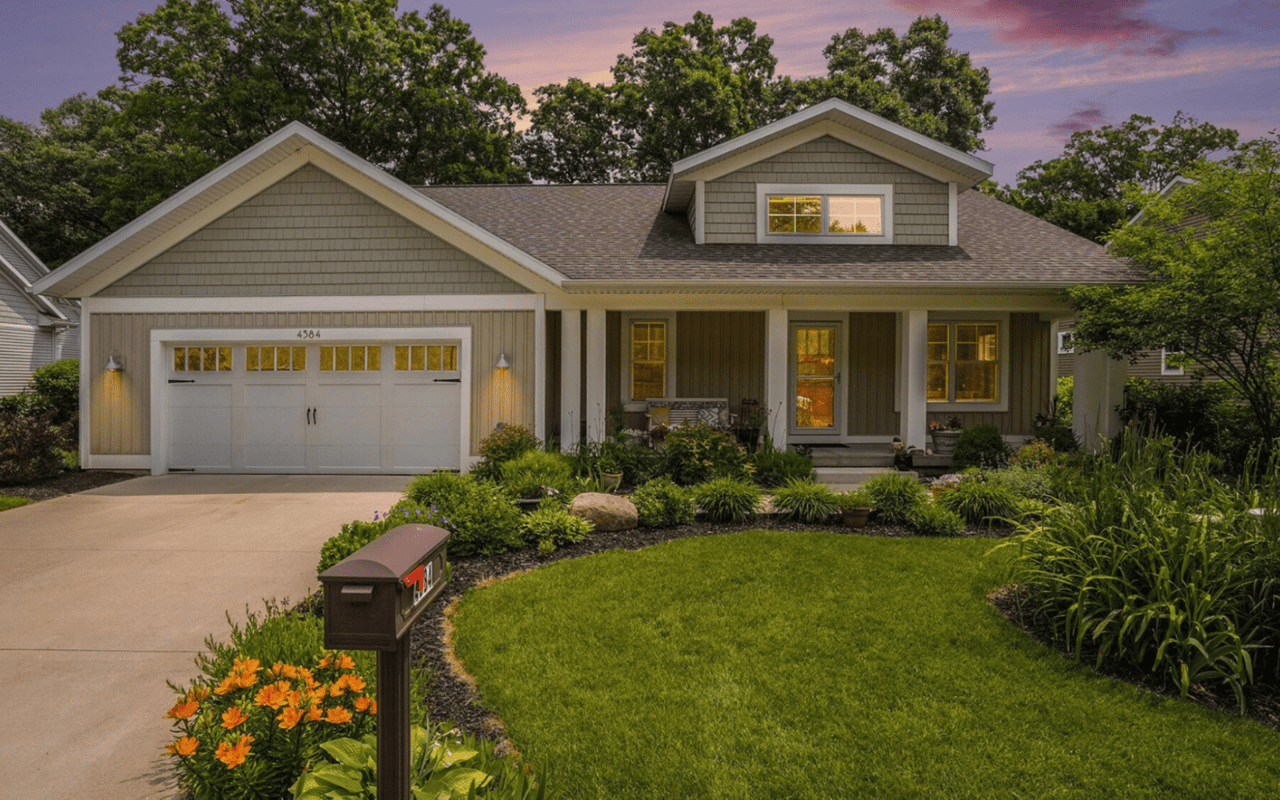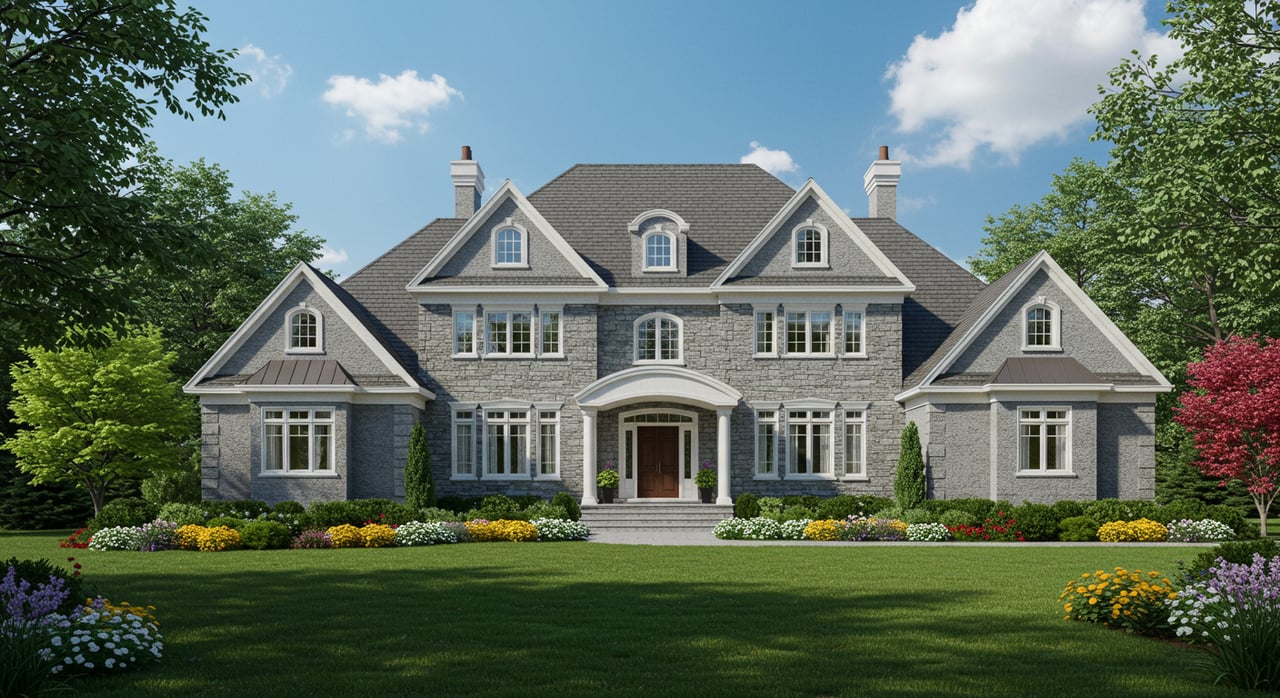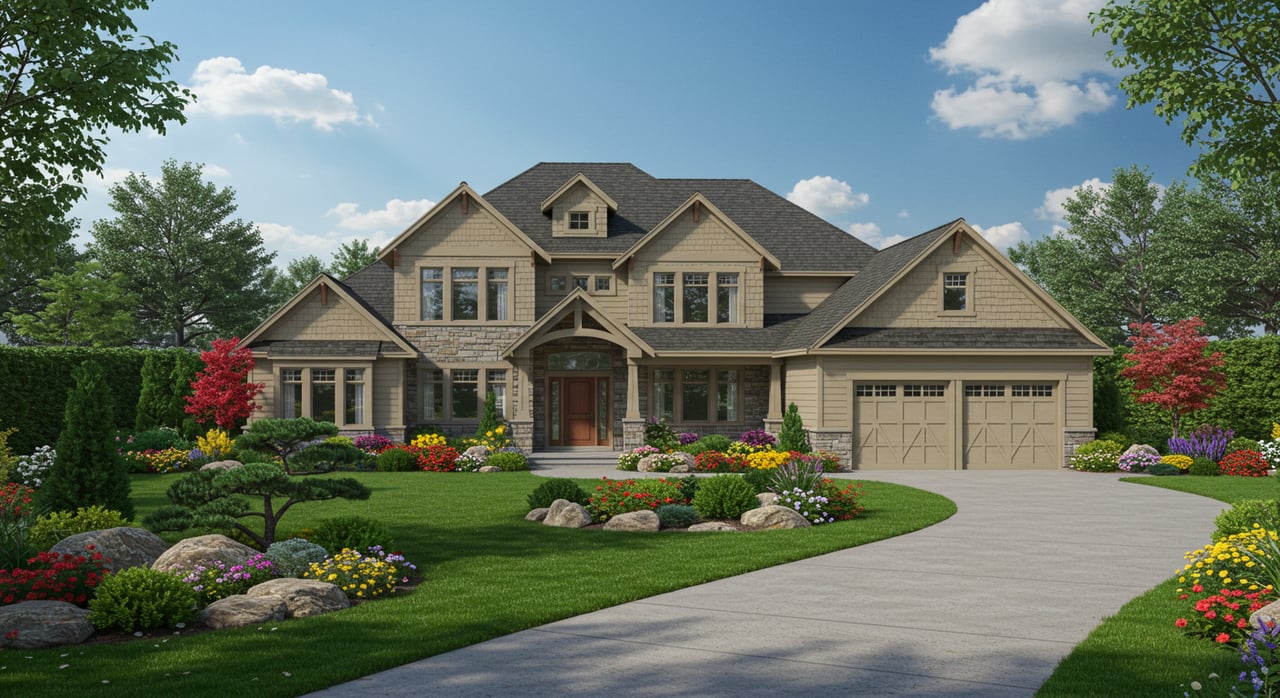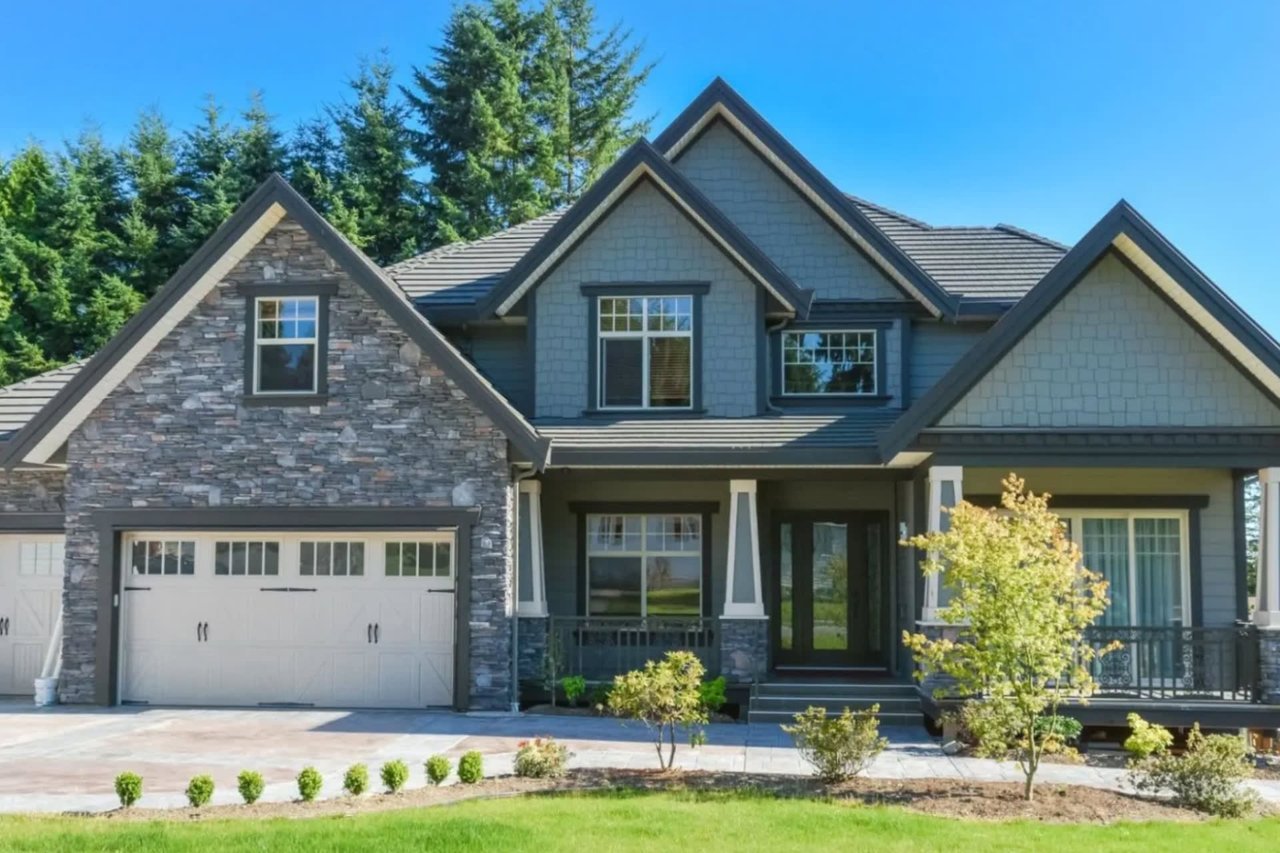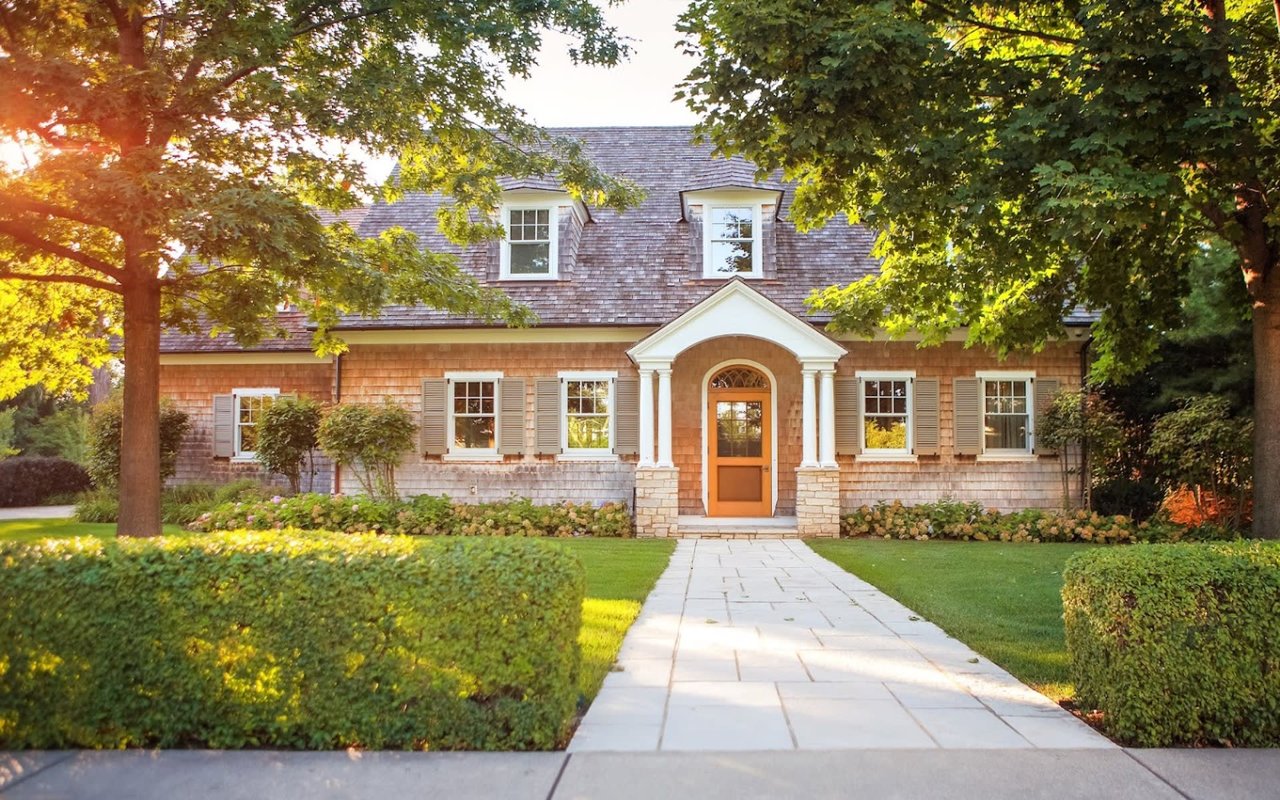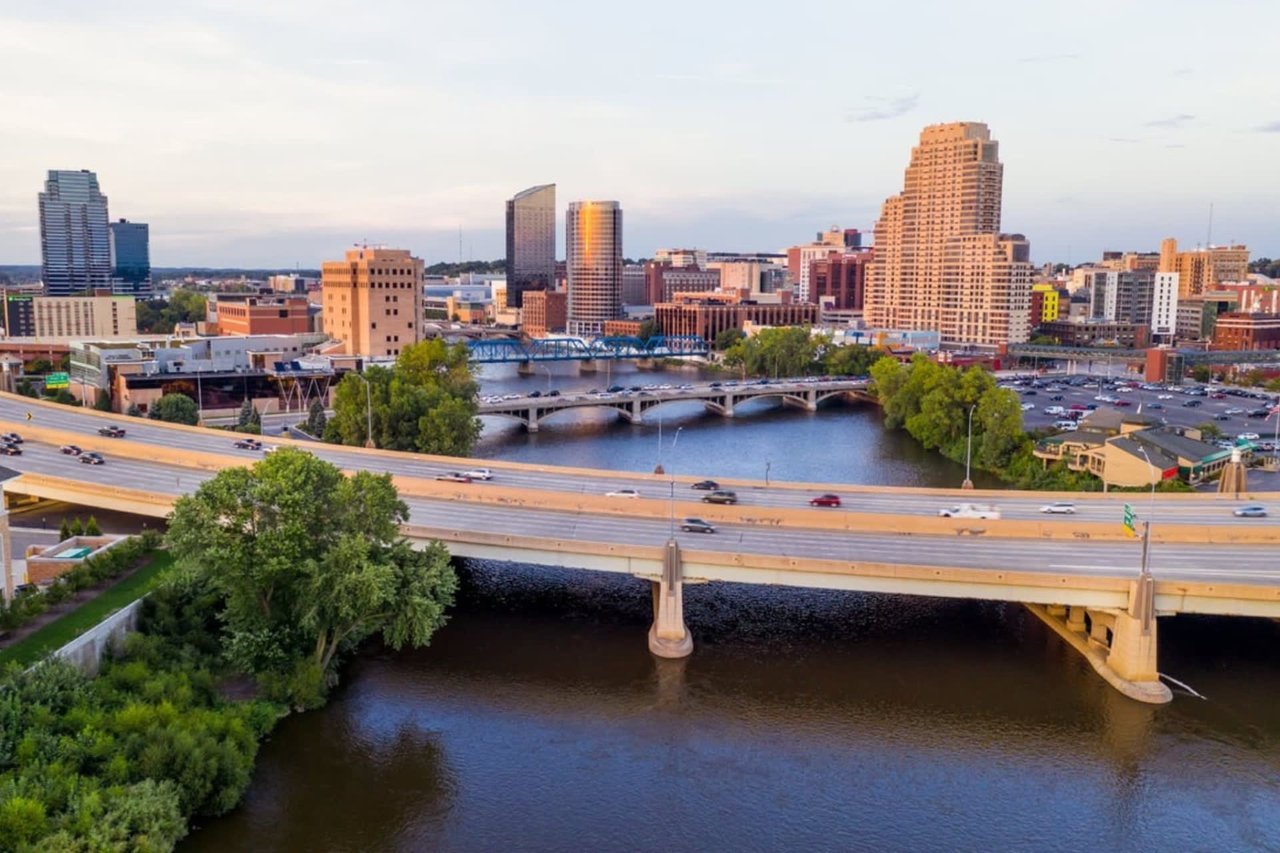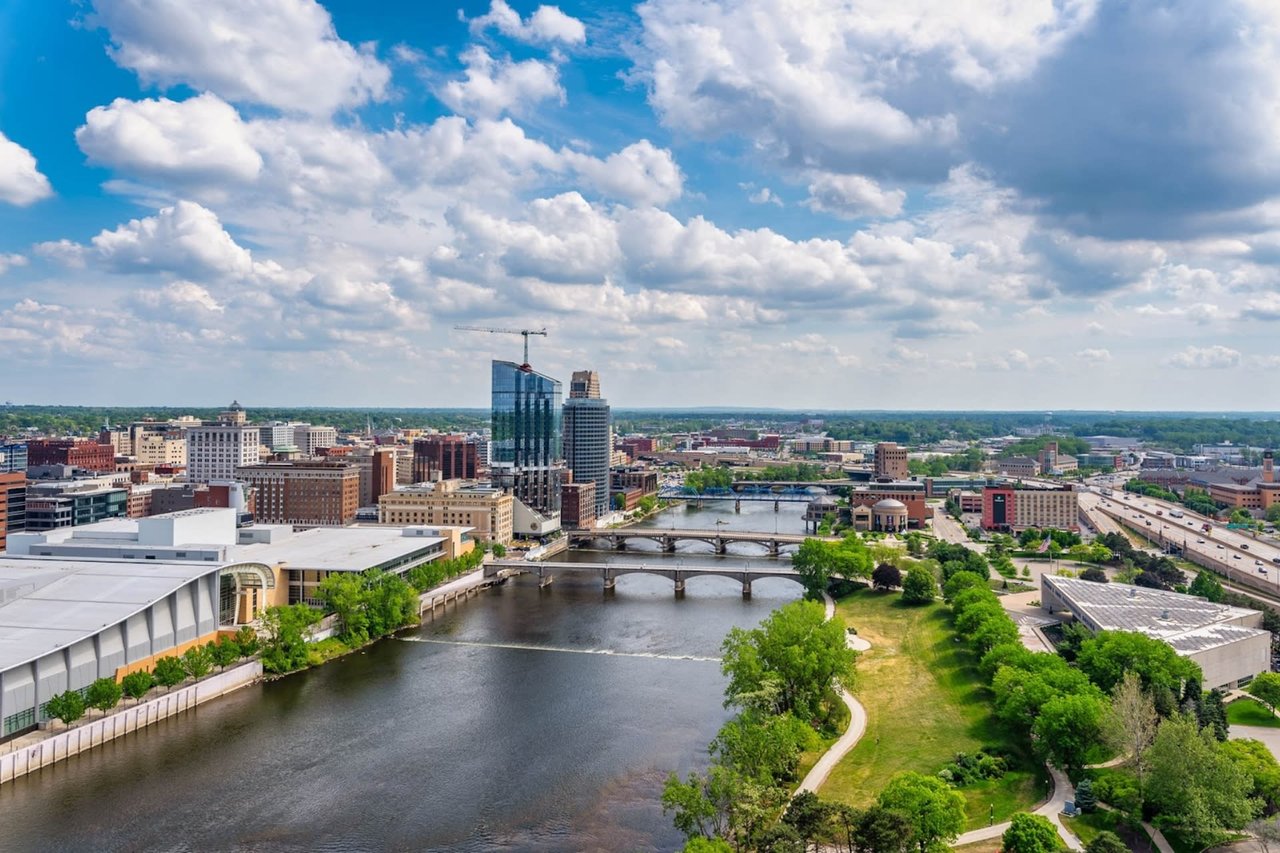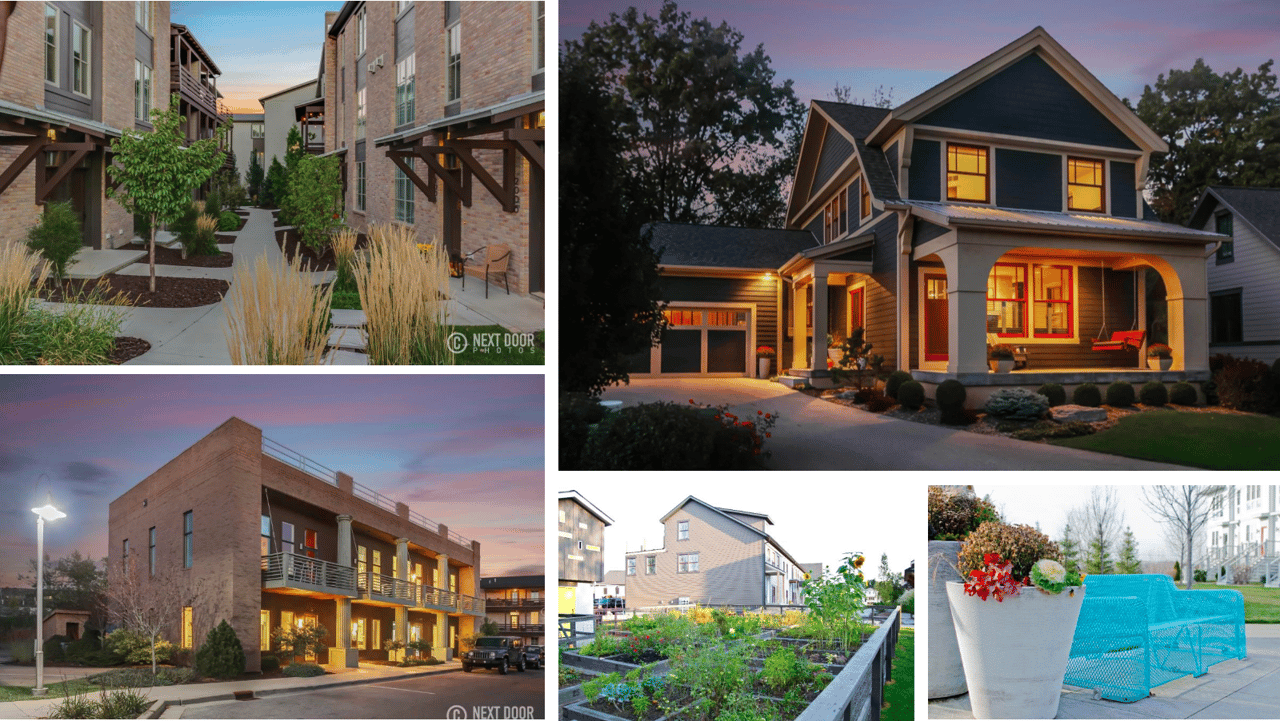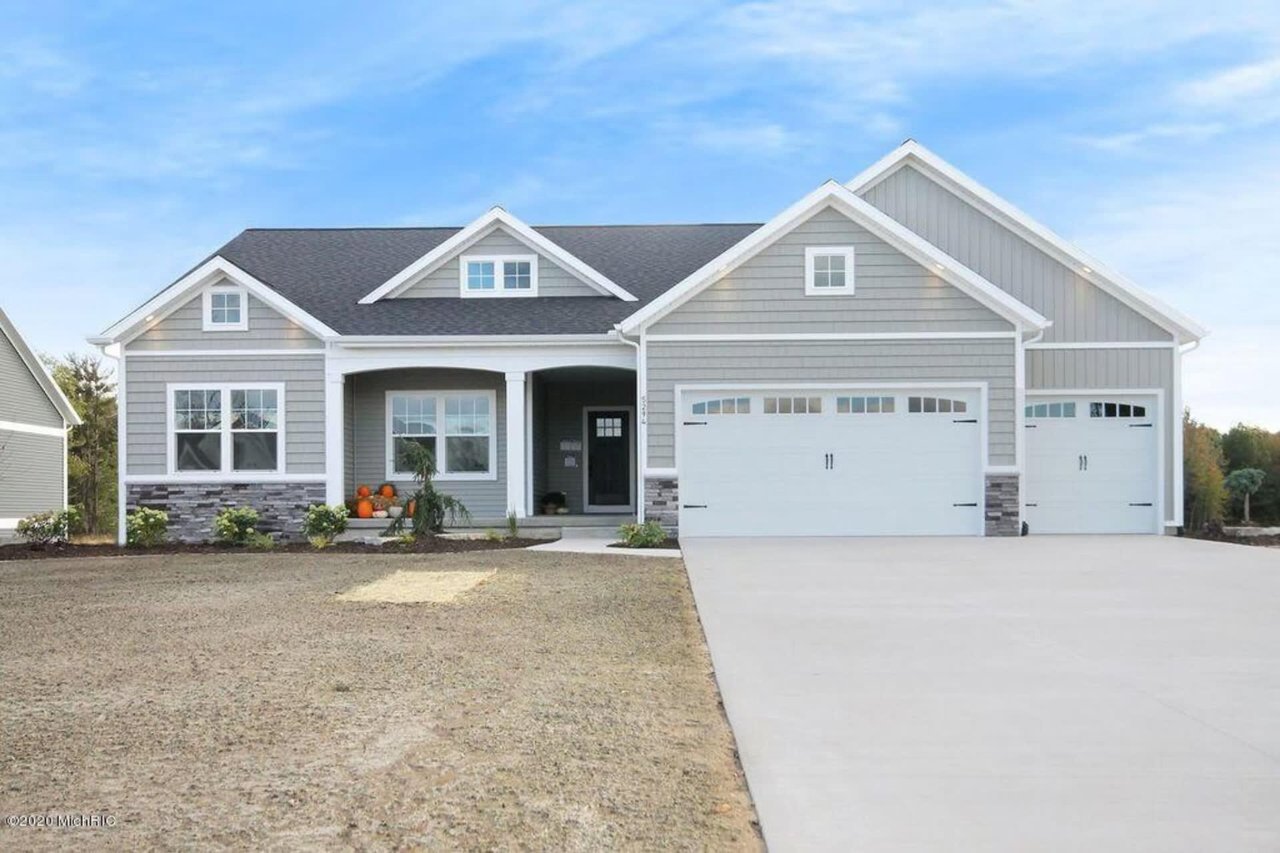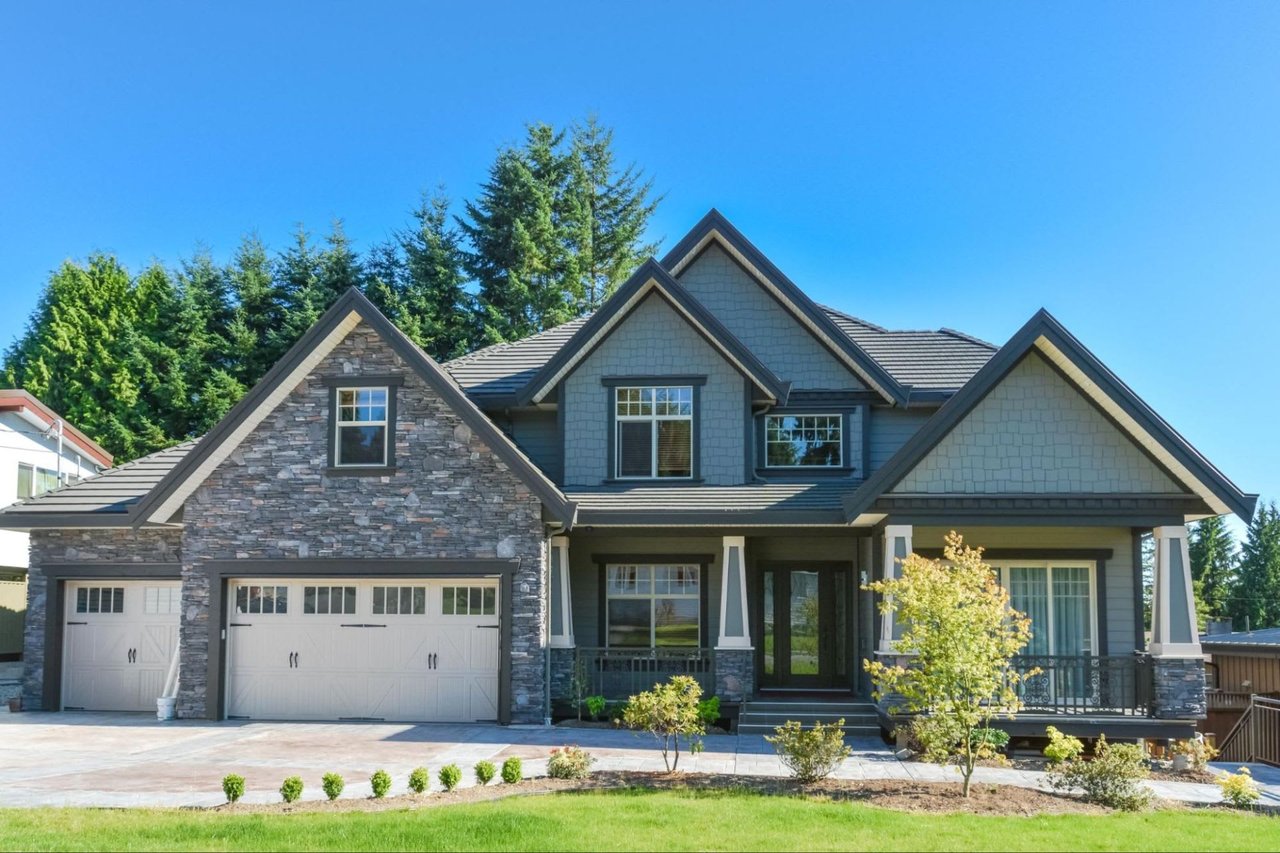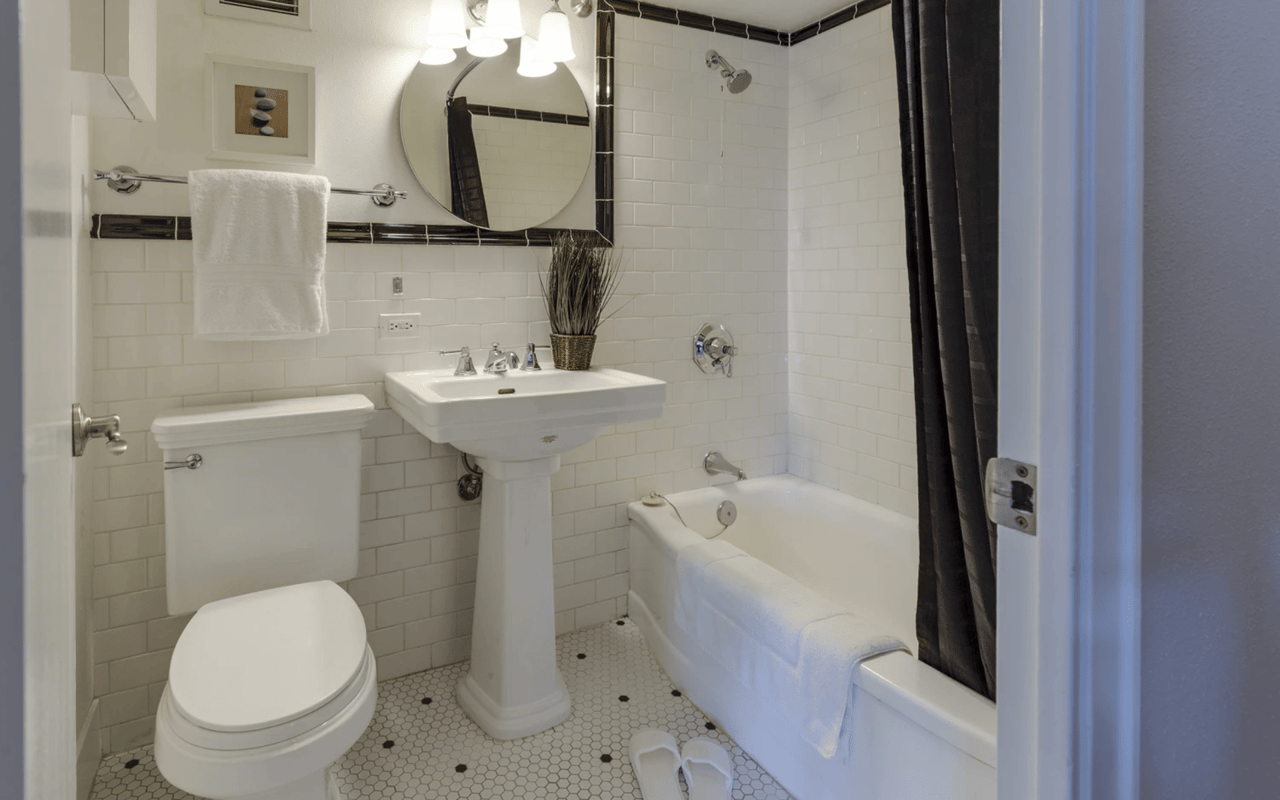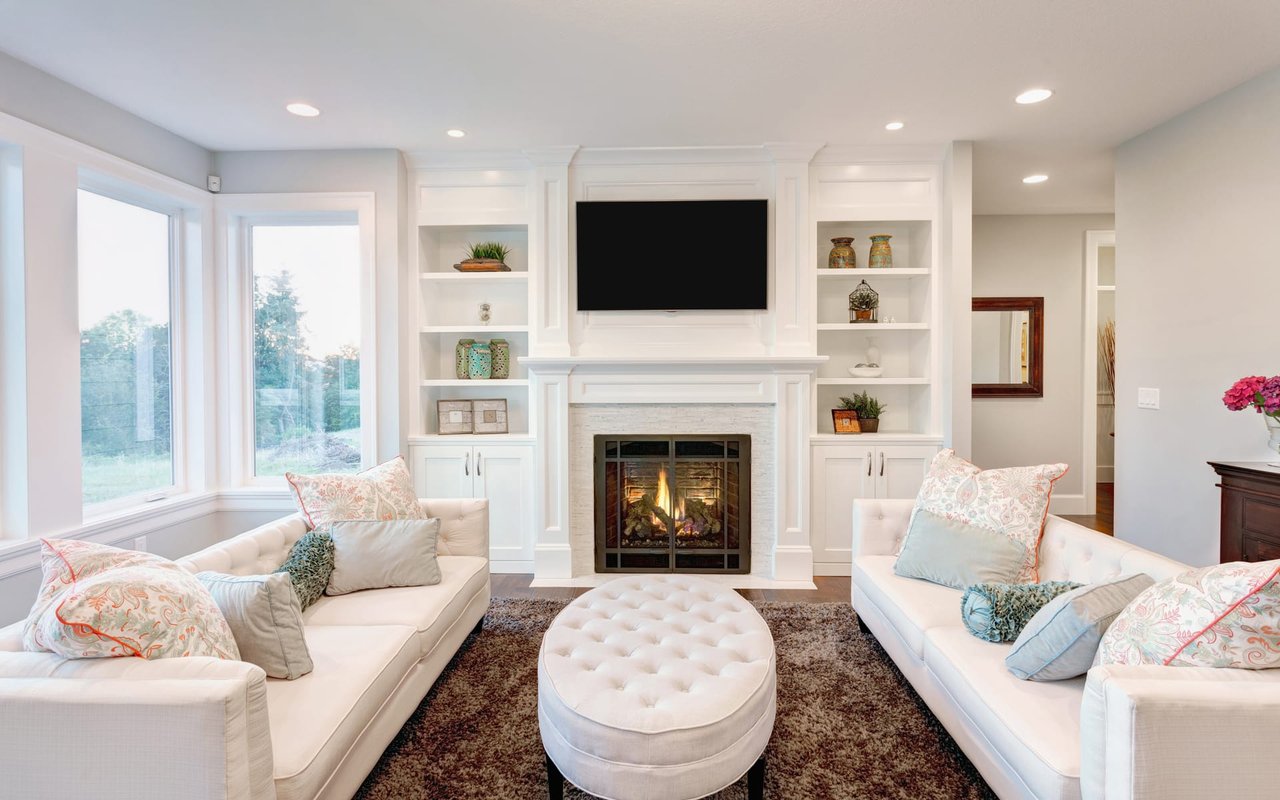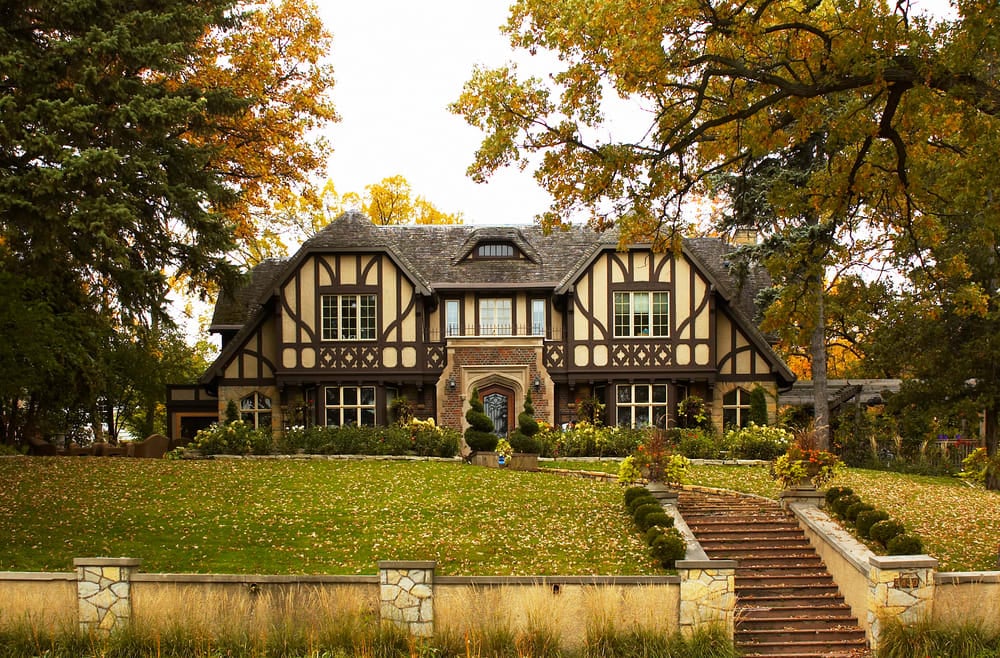A short 30-minute drive east of Lake Michigan, along the banks of the Grand River, the city of Grand Rapids offers residents and visitors a dynamic lifestyle experience. Though it's the second largest city in Michigan, with approximately 200,000 residents, Grand Rapids often flies under the radar of its larger Upper Midwestern siblings, including Detroit, Chicago, and Milwaukee. But the city's vibrant history (particularly when concerning the furniture design industry), genuine four-season climate, and an impressive array of shopping, dining, and outdoor experiences place it among the top 15 cities in the country for quality of life and top 20 best places to live according to U.S. News & World Report annual Best Places to Live Ranking.
Lauded for its more than 1,200 acres of public parks, commitment to the arts, and growing hub for technical discovery and innovation, it's no mystery what draws people to Grand Rapids. In addition to its modern-day bonafides, Grand Rapids is beloved for its architectural grandeur, which is a compelling reflection of the city's historical and cultural evolution. Featuring a diverse array of architectural styles, from residential homes that include Victorian, Colonial, and Mid-Century Modern designs (including an iconic Frank Lloyd Wright masterpiece) to trend-setting public and commercial buildings, the architectural landmarks in Grand Rapids serve to enhance its world-class reputation. Below, we explore the city's most notable buildings.
Heritage Hill Historic District
When discussing Grand Rapids architecture, such a dialogue must always include the resplendent Heritage Hill Historic District. An unparalleled jewel of residential design and a point of pride for the city of Grand Rapids, the district and the foundation that supports it were pioneering forces in community preservation in the U.S. in the early 1970s. Saving roughly 75% of the neighborhood from demolition, the district is among the largest urban historic districts in the United States. The neighborhood comprises over 1,300 homes showcasing over 60 architectural styles, with the earliest homes dating from the 1840s. The neighborhood includes beautifully preserved examples of Italianate, Greek Revival, Queen Anne, Georgian Revival, and Colonial Revival architecture and features two Frank Lloyd Wright-designed homes. Every May, the foundation hosts a neighborhood Tour of Homes, which includes well-preserved private homes and historic buildings.
Meyer May House
One of the Heritage Hill homes designed by Frank Lloyd Wright is the Meyer May House. Completed in 1908, the home is considered a masterpiece of Wright's famed Prairie-style architecture period. Purchased and meticulously restored by Grand Rapids-based furniture manufacturer Steelcase in 1985 (the company collaborated with Wright as far back as the 1930s, producing furniture for his Johnson Wax Administration Building in Racine, Wisconsin). The Meyer May House opened to the public in 1987, complete with original furnishings and accurate reproductions, allowing visitors to experience Wright's vision of a Prairie house as he intended.
Amway Grand Plaza Hotel
The Amway Grand Plaza Hotel is a testament to the grandeur and elegance of early 20th-century architecture. Opened in 1913 as the Pantlind Hotel, it once ranked among the top 10 hotels in the country. The building's architectural style blends Italian Renaissance and Beaux-Arts, featuring grand ballrooms, ornate ceilings, and exquisite chandeliers. In the 1980s, the hotel underwent a major renovation and expansion, adding a modern glass tower that seamlessly integrates with the historic structure. The Amway Grand Plaza symbolizes the city's ability to honor its past while embracing the future.
George Welsh Civic Auditorium / DeVos Place
The next entry in this tour of Grand Rapids architecture blends a favorite building of the city's past with one designed to invoke the future. The first half of that equation is the George Welsh Civic Auditorium. Originally known as the Civic Auditorium, upon its opening in 1933, the building was an instant hit with patrons. Prominently situated on the Grand River's eastern shore, the neo-classical building features intricate stonework by sculptors Corrado and Rudolph Parducci, including zodiac signs and the Grand Rapids seal. Inside the lobby is a gallery of sleek Art Deco metal and marble finishes. Having survived the early 1980s demolition plan that made way for the DeVos Place Convention Center, the Welsh's facade and lobby were ultimately preserved and incorporated as the center's southern elevation. Now, as part of DeVos Place, the Civic Auditorium lives on, delighting yet another generation of concert and convention goers.
The Exhibitors Building
The Exhibitors Building, constructed in the 1920s, is a remarkable example of Renaissance architecture. Initially serving as a showroom for various furniture companies, this historic building showcases the intricate polychrome terracotta designs that have withstood the test of time. These terra cotta elements, highlighted by multiple colors of fired clay, depict the tools used by furniture makers, including a wood plane, mallet, T-square, and triangle. Decorative features include lion faces that encircle its upper levels. Visitors can use the skywalk connecting the Amway Grand Plaza to the convention center to appreciate these details up close. The Exhibitors Building was added to the National Register of Historic Places in 1982
McKay Tower
Representing a nearly 200-year-long display of architectural evolution, the history of the McKay Tower traces back some 40 years before its actual construction and the site of Grand Rapids' first framed building (as well as the spot where the city's first non-Native American wedding took place). The two-story Wonderly Building replaced the original home in the 1870s; then, it was replaced by the four-story Grand Rapids National Banks in 1914. Those four floors now serve as the first few levels of the 18-story McKay Tower. Featuring luxury apartments and a grand ballroom, the building is notable for its Doric columns and distinctive layers that reflect the structure's evolution and that of Grand Rapids.
Learn More About Grand Rapids Luxury Real Estate
Grand Rapids, MI, is a city rich in architectural diversity and history. Its beloved and distinctive buildings reflect the city's evolution from the early 19th century to contemporary times. Each landmark's unique style and historical significance contribute to the city's vibrant cultural tapestry. For those seeking even more of Grand Rapids' extraordinary lifestyle, including the city's luxurious and historically relevant residential real estate, contact the Cheryl Grant Real Estate Team today to start your Grand Rapids real estate journey.
*Header photo courtesy of Pictophile via Flickr
*Header photo courtesy of Pictophile via Flickr
